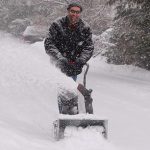There’s a lot more to installing new landscaping then just picking a spot, picking plants, and going to town. Especially if you are walking into a new situation, there’s a lot you’ll want to look at and evaluate prior to installing anything new. It’s hard enough working on a plot of land that you are used to, let alone one that you don’t kn0w all that well. Today, we look at the key things to evaluate before you stick a shovel in the ground.
Retaining Walls
If the gardens come with retaining walls, make sure the walls are stable, with no cracks or bulges. A stable retaining wall can make for great gardens, but if it collapses, it can wipe out weeks worth of hard work. Cracks and bulges can indicate tree roots are pushing against the wall if there is a tree near, or they can simply indicate a poorly constructed wall. Needless to say, before going any further, you’ll want to address the wall.
Drainage
This is a big thing to take a look at – poor drainage can cause waterlogged gardens, standing water in the lawn, or in severe cases, structural issues with houses, hardscape, and lawn buildings. Make sure that all drainage directs water to open areas away from buildings. This is particularly important if surfaces like stone and cement play a big part in your property.
Sub-surface Utilities
Any time you look to dig beneath the surface, you’ll need to keep an eye out for a variety of utilities that run underneath the surface. Water, gas, sewage, and electrical can all be found where you might want to put in landscaping, so do your research. Ask the prior owners, your utility company, or get a professional to map out the pies and wires before you dig.
Existing Hardscape
If there are problems with existing hardscape such as failing patios and decks or heaving pavement, you’ll need to address them before looking towards plantings and other landscaping. The reason behind this is that having to fix hardscape can often result in having to uproot any nearby landscaping, which can cause damage to or even kill off landscaping, particularly young or new planting. Not to mention, it adds extra work.
Make sure to take a look at all of these spots before you start drawing out your plans for your new gardens, or else you may find yourself running into problems during the course of your project, meaning extra time and possibly extra money and labor.






